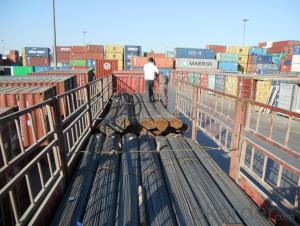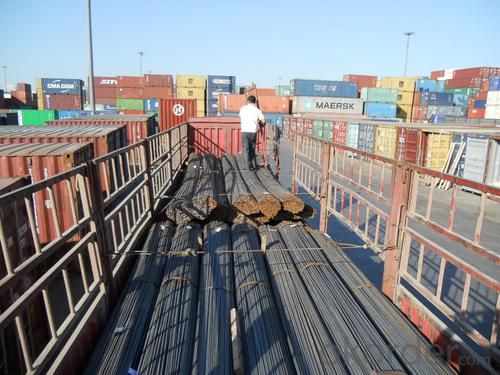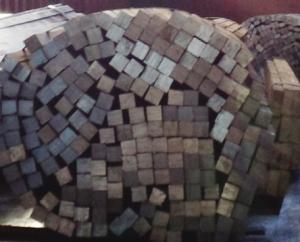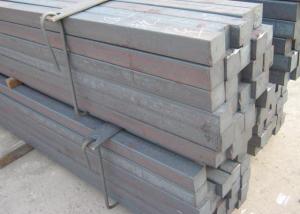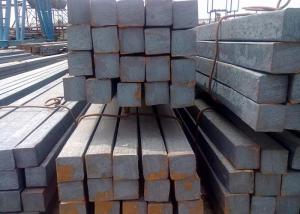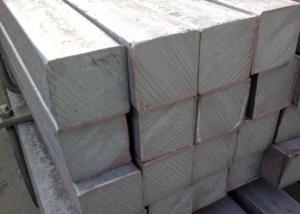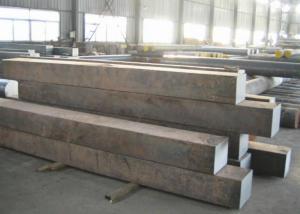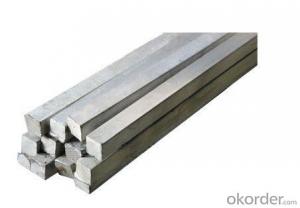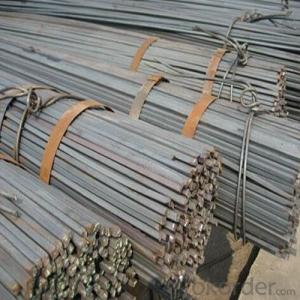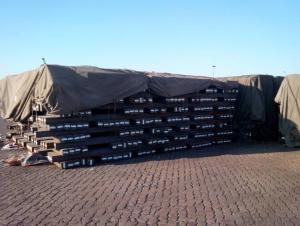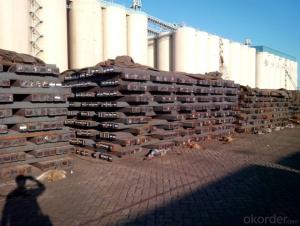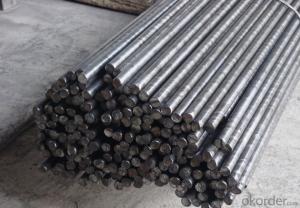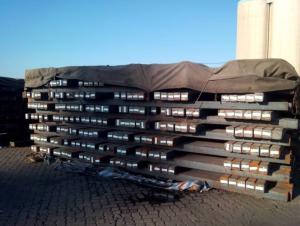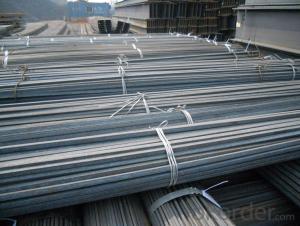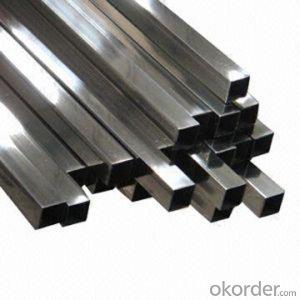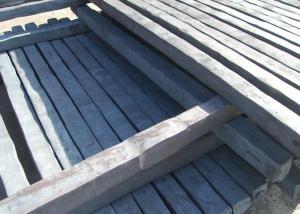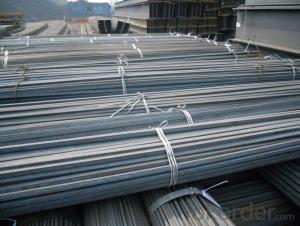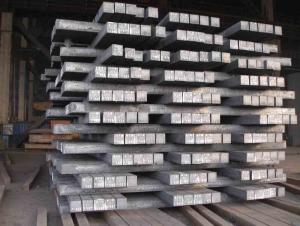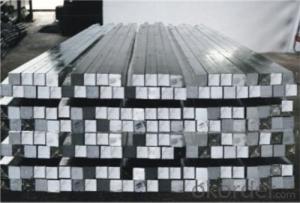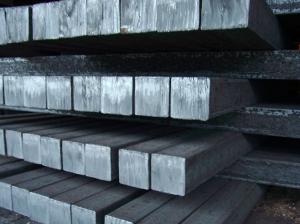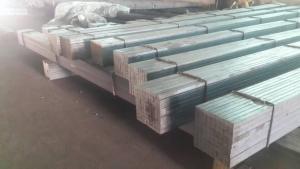Hot Rolled Square Steel Bar Material Q195
- Loading Port:
- Qingdao
- Payment Terms:
- TT or LC
- Min Order Qty:
- 25 m.t.
- Supply Capability:
- 3000 m.t./month
OKorder Service Pledge
OKorder Financial Service
You Might Also Like
Product Description:
OKorder is offering Hot Rolled Square Steel Barat great prices with worldwide shipping. Our supplier is a world-class manufacturer of steel, with our products utilized the world over. OKorder annually supplies products to European, North American and Asian markets. We provide quotations within 24 hours of receiving an inquiry and guarantee competitive prices.
Product Applications:
The Square Steel is normally used as structure steel.
Row material for other structure steel like steel angles, channels, I-beams, H-beams, etc…
Product Advantages:
OKorder's Hot Rolled Square Steel Bar Material Q195 are durable, strong, and resist corrosion.
Main Product Features:
· Premium quality
· Prompt delivery & seaworthy packing (30 days after receiving deposit)
· Corrosion resistance
· Can be recycled and reused
· Mill test certification
· Professional Service
· Competitive pricing
Product Specifications:
Length of a side(mm) | Theoretical weight(kg/m) | Length of a side(mm) | Theoretical weight(kg/m) |
6 | 0.283 | 32 | 8.04 |
7 | 0.385 | 33 | 8.55 |
8 | 0.502 | 34 | 9.07 |
9 | 0.636 | 35 | 9.62 |
10 | 0.785 | 36 | 10.17 |
11 | 0.950 | 38 | 11.24 |
12 | 1.13 | 40 | 12.56 |
13 | 1.33 | 42 | 13.85 |
14 | 1.54 | 45 | 15.90 |
15 | 1.77 | 48 | 18.09 |
16 | 2.01 | 50 | 19.63 |
17 | 2.27 | 53 | 22.05 |
18 | 2.54 | 55 | 23.6 |
19 | 2.82 | 56 | 24.61 |
20 | 3.14 | 58 | 26.4 |
21 | 3.46 | 60 | 28.26 |
22 | 3.80 | 63 | 31.16 |
23 | 4.15 | 65 | 33.17 |
24 | 4.52 | 68 | 36.3 |
25 | 4.91 | 70 | 38.49 |
26 | 5.30 | 75 | 44.16 |
27 | 5.72 | 80 | 50.24 |
28 | 6.15 | 85 | 56.72 |
29 | 6.60 | 90 | 63.59 |
30 | 7.06 | 95 | 70.85 |
31 | 7.54 | 100 | 78.50 |
Notes:
1, The theoretical weights in the list, base on the density of 7.85 g/cm3.
2, The numbers with mean that they are not regulars or we don’t offer them.
-List 2. The allowed tolerance of Square Steel:
Length of a side(mm) | Allowed Tolerance | ||
Group1 | Group2 | Group3 | |
5.5~7 | ±0.20 | ±0.30 | ±0.40 |
7~20 | ±0.25 | ±0.35 | ±0.40 |
20~30 | ±0.30 | ±0.40 | ±0.50 |
30~50 | ±0.40 | ±0.50 | ±0.60 |
60~80 | ±0.60 | ±0.70 | ±0.80 |
80~110 | ±0.90 | ±1.0 | ±1.1 |
110~150 | ±1.2 | ±1.3 | ±1.1 |
150~190 | ―― | ―― | ±2.0 |
190~250 | ―― | ―― | ±2.5 |
Chemical Composition:
Standard | Grade | Element (%) | ||||
GB | Q195 | C | Mn | S | P | Si |
≤0.12 | ≤0.50 | ≤0.04 | ≤0.035 | ≤0.3 | ||
-Method of deoxidation: F, b, Z
Usage/Applications of Square Steel:
-The Square Steel is normally used as structure steel.
-Row material for other structure steel like steel angles, channels, I-beams, H-beams, etc…
Packaging & Delivery of Square Steel:
-Packing Detail: The products can be packed in bundles by steel wires.
-Delivery Detail: 30~45 working days after receive buyer’s T.T. or L/C.
Transportation-1, The products can be delivered by bulk vessel or by container.
2, The maximum quantity of loading of container is 25 tons.
3, The products usually are transported to the nearest port from the production place.
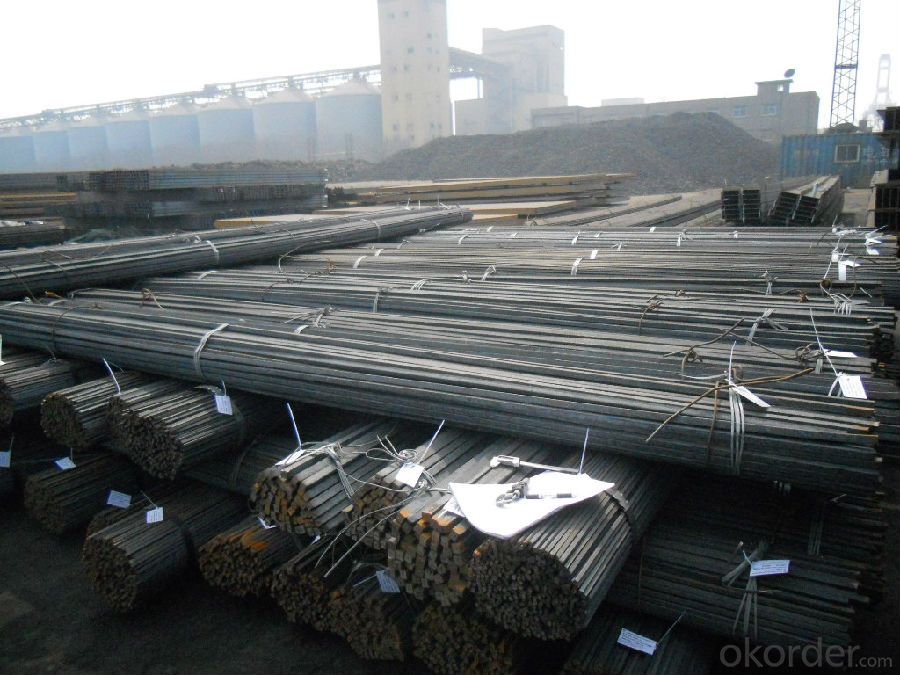
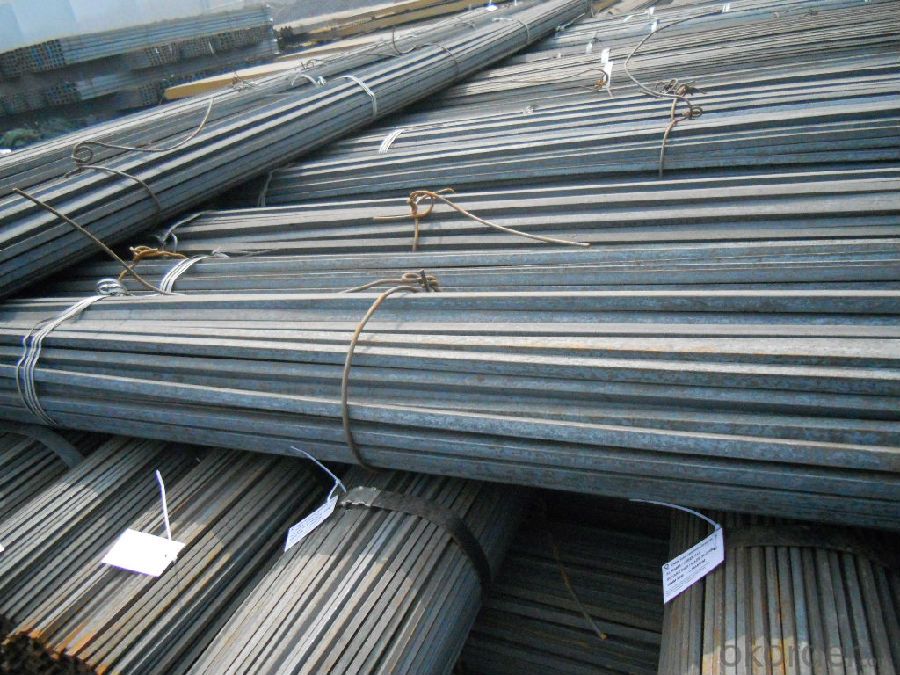
FAQ:
Q1: Why buy Materials & Equipment from OKorder.com?
A1: All products offered byOKorder.com are carefully selected from China's most reliable manufacturing enterprises. Through its ISO certifications, OKorder.com adheres to the highest standards and a commitment to supply chain safety and customer satisfaction.
Q2: How do we guarantee the quality of our products?
A2: We have established an advanced quality management system which conducts strict quality tests at every step, from raw materials to the final product. At the same time, we provide extensive follow-up service assurances as required.
Q3: How soon can we receive the product after purchase?
A3: Within three days of placing an order, we will begin production. The specific shipping date is dependent upon international and government factors, but is typically 7 to 10 workdays.
- Q: What are some common materials used in the construction of a steel square?
- Some common materials used in the construction of a steel square include stainless steel, carbon steel, and aluminum. Stainless steel is commonly used due to its durability, corrosion resistance, and ability to withstand high temperatures. Carbon steel is also frequently used as it provides strength and is cost-effective. Aluminum is another material used in the construction of steel squares due to its lightweight nature, which makes the tool easier to handle and carry. These materials are chosen for their specific properties to ensure the steel square is reliable, accurate, and long-lasting.
- Q: What is the weight of a typical steel square?
- The weight of a typical steel square can vary depending on its size and thickness. However, as a general estimate, a 1-inch thick steel square with sides measuring 12 inches can weigh around 40 pounds. It is important to note that this weight can differ based on the specific type and grade of steel being used.
- Q: The steel structure material can do?
- Yes, if you are easy to do, you can
- Q: How do you use a steel square to determine the angle of a hip rafter cut?
- To use a steel square to determine the angle of a hip rafter cut, you will need to follow these steps: 1. Start by placing the steel square on the edge of the hip rafter at the desired location for the cut. 2. Align one arm of the square with the edge of the rafter and make sure it is horizontal. 3. Locate the 12-inch mark on the blade of the square and align it with the top edge of the rafter. 4. Take note of the number on the blade that aligns with the bottom edge of the rafter. This number represents the pitch of the roof. 5. Next, locate the number on the tongue of the square that corresponds to the pitch of the roof. 6. Use a pencil or a marking tool to draw a line along the tongue of the square. 7. This line represents the angle at which you need to make the cut on the hip rafter. 8. Finally, use a saw or any appropriate cutting tool to carefully cut along the marked line. By using a steel square in this manner, you can accurately determine the angle of the hip rafter cut and ensure a precise fit for your roofing project. It is important to note that the specific measurements and markings on the square may vary depending on the type and brand of the square, so it is recommended to consult the instructions or user manual provided with your particular steel square for more accurate guidelines.
- Q: Can a steel square be used for checking the squareness of a cabinet?
- Indeed, the squareness of a cabinet can be checked using a steel square. Termed a try square, a steel square is a tool equipped with a right angle, enabling the assessment of squareness. By aligning the corners of the cabinet with the edge of the steel square, one can readily confirm if the cabinet is square or possesses any irregularities in its angles. This methodology proves effective in guaranteeing the cabinet's proper alignment and adherence to the desired specifications.
- Q: How do you use a steel square for marking and cutting finger joints?
- Achieving accurate and professional-looking results in your woodworking projects can be done by following these steps and utilizing a steel square for marking and cutting finger joints: 1. Begin by ensuring that your steel square is clean and free of any rust or debris, as this will aid in obtaining precise measurements and markings. 2. Measure and mark the desired length and width of each finger joint on the workpiece. Utilize a ruler or measuring tape to make exact measurements and transfer them onto the workpiece using the steel square. The length can be marked using the long side of the steel square, while the width can be marked using the shorter side. 3. Align the steel square with the edge of the workpiece, ensuring that it is perfectly square and flush. Secure the square in place by either using a clamp or holding it firmly against the workpiece. 4. Trace along the edges of the steel square onto the workpiece using a pencil or marking knife. This will create clear and precise guidelines for cutting the finger joints. 5. Repeat the marking process for each finger joint, ensuring that the measurements and alignments remain consistent throughout. 6. Once all the finger joints have been marked, proceed to cut along the marked lines using a saw or chisel. Take your time and work diligently to guarantee clean and accurate cuts. 7. Test the fit of the finger joints by joining the pieces together. If necessary, make any necessary adjustments or refinements to the joints using a file or sandpaper. By adhering to these steps and employing a steel square for marking and cutting finger joints, you can achieve precise and professional-looking results in your woodworking endeavors.
- Q: Can a steel square be used for cutting angles in woodworking?
- No, a steel square is primarily used for measuring right angles and marking straight lines in woodworking, but it is not designed for cutting angles.
- Q: Can a steel square be used for pergola layout and construction?
- Yes, a steel square can be used for pergola layout and construction. A steel square, also known as a framing square or carpenter's square, is a versatile tool commonly used in carpentry and construction projects. It is designed to assist with the layout and construction of right angles, which are crucial for building structures like pergolas. Using a steel square, you can easily mark and measure the angles required for pergola construction. It can help you accurately establish the corners and ensure that all the beams and posts are precisely aligned. Additionally, a steel square can be used to check for squareness and make adjustments if necessary during the construction process. The durability and stability of a steel square make it suitable for outdoor construction projects like pergolas. It is typically made of high-quality steel that can withstand heavy use and resist damage from exposure to the elements. Furthermore, the clear markings and easy-to-read measurements make it a reliable tool for precise layout and construction. In conclusion, a steel square is a valuable tool that can be used effectively for pergola layout and construction. Its versatility, accuracy, and durability make it a reliable choice for ensuring that your pergola is built with precision and stability.
- Q: Can a steel square be used for laying out a garden bed?
- Indeed, the utilization of a steel square is viable for the establishment of a garden bed. This multifunctional instrument is capable of measuring and delineating right angles, a crucial aspect in establishing accurate and linear garden bed boundaries. Regardless of whether you intend to construct a rectangular or square garden bed, the application of a steel square can guarantee precise alignment of the corners. Furthermore, the straight edge of the steel square can serve as a reliable reference for producing straight lines and edges within your garden bed. In conclusion, the utilization of a steel square facilitates the creation of orderly and symmetrical garden beds.
- Q: Can a steel square be used for precise woodworking?
- Yes, a steel square can be used for precise woodworking. Steel squares are commonly used in woodworking for accurate measurements, marking, and checking right angles. They are durable, provide straight edges, and are suitable for various woodworking tasks such as marking lines, checking corners, and ensuring accurate cuts and joints.
Send your message to us
Hot Rolled Square Steel Bar Material Q195
- Loading Port:
- Qingdao
- Payment Terms:
- TT or LC
- Min Order Qty:
- 25 m.t.
- Supply Capability:
- 3000 m.t./month
OKorder Service Pledge
OKorder Financial Service
Similar products
Hot products
Hot Searches
Related keywords
